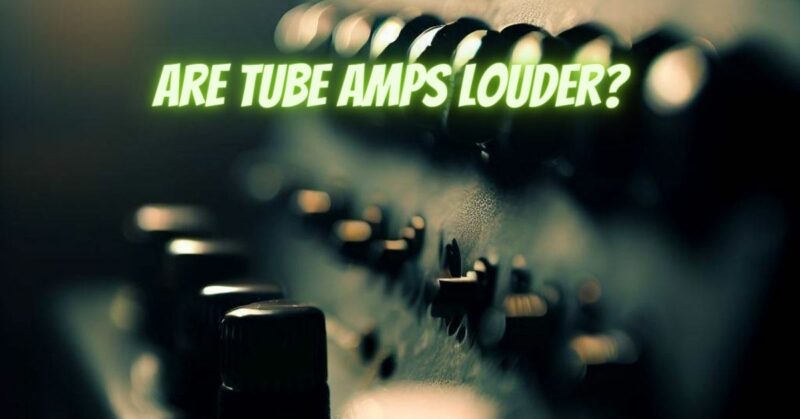Tube amplifiers, often referred to as “valve amplifiers,” have long held a special place in the hearts of audiophiles and music enthusiasts for their warm and rich sound quality. One common perception about tube amplifiers is that they produce greater volume compared to their solid-state counterparts. In this article, we’ll dive into the world of tube amplifiers to explore whether they genuinely generate more volume and clarify the factors that contribute to their reputation for exceptional sound.
Understanding Tube Amplifiers
Tube amplifiers are electronic amplifiers that use vacuum tubes (electron tubes or thermionic valves) to amplify audio signals. These vacuum tubes contain an anode (plate), cathode, and control grid. When an electrical signal passes through the control grid, it modulates the flow of electrons between the cathode and anode, resulting in amplification of the input signal.
Tube Amplifiers and Sound Quality
One of the key attractions of tube amplifiers is their ability to produce a warm, harmonically rich sound that many listeners find appealing. Tube amplifiers are known for adding subtle distortion and coloration to audio signals, which can be perceived as a pleasant “tube sound.” This characteristic makes them highly sought after for reproducing vintage and analog audio recordings.
Tube Amplifiers and Volume: The Truth
While tube amplifiers are renowned for their unique sound quality, the notion that they inherently produce greater volume compared to solid-state amplifiers is a myth. The volume level of an amplifier primarily depends on its power output, which is measured in watts. Both tube and solid-state amplifiers come in various power ratings, and their volume capabilities are determined by their wattage.
Factors to Consider:
- Wattage Rating: The most critical factor affecting an amplifier’s volume is its wattage rating. Higher-wattage amplifiers, whether tube or solid-state, can produce greater volume. Tube amplifiers are available in a wide range of wattages, from a few watts for small practice amps to several hundred watts for high-powered models.
- Speaker Efficiency: The efficiency of the speakers connected to the amplifier plays a significant role in overall volume. More efficient speakers can produce higher volume levels for a given amplifier wattage.
- Amplifier Design: The design of the amplifier circuitry, including the number of tubes and the topology, can influence its volume capabilities. Some tube amplifiers are designed for low-wattage, clean tones, while others are built for high-wattage, overdriven sounds.
- Speaker Cabinet: The size and design of the speaker cabinet also affect volume. Larger cabinets with multiple speakers can produce higher volume levels than smaller ones.
In summary, tube amplifiers do not inherently produce greater volume than solid-state amplifiers. The volume capabilities of an amplifier are primarily determined by its wattage rating, speaker efficiency, design, and speaker cabinet. Tube amplifiers are cherished for their unique sound characteristics and are chosen for their tonal qualities rather than their volume alone.
When selecting an amplifier, whether tube or solid-state, it’s essential to consider your specific needs, musical preferences, and performance requirements. If you prioritize the warm, vintage sound of a tube amplifier and require high volume levels, you can find tube amplifiers with ample wattage to meet your needs. Ultimately, the choice between tube and solid-state amplifiers should be based on your desired tone and sound quality, with volume being just one of several considerations.


